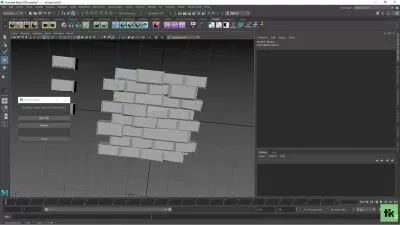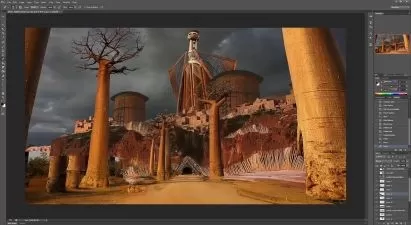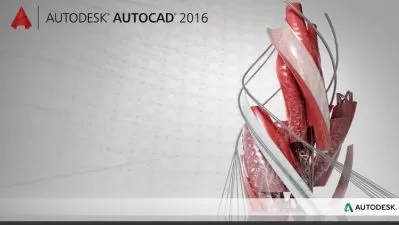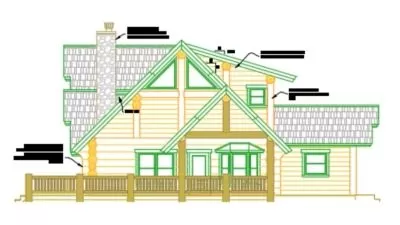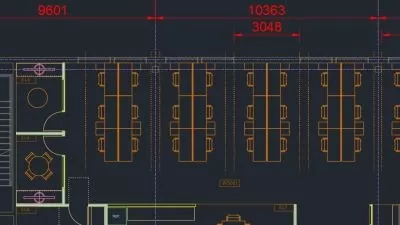AutoCad and Photoshop for Architects
Garry Miley
5:44:01
Description
Express your architectural ideas quickly and efficiently with an AutoCad to Photoshop workflow.
What You'll Learn?
- Use AutoCad and Photoshop to create your very first design presentation in plan section and elevation.
- Learn simple, efficient Photoshop presentation skills taking advantage of the program's inherent layer's function.
- Understand AutoCad and Photoshop Layers.
- Assemble a professional quality Design Presentation on a standard sized presentation panel.
Who is this for?
What You Need to Know?
More details
DescriptionIn this course we’ll develop a clear and easy to follow workflow to bring hand drawn architectural sketches from the drafting table and onto the computer. The methodology involves the development of a targeted range of skills in AutoCad and Photoshop.
We begin with a brief discussion about the nature of architectural drawing and note the important distinction to be made between ‘presentation’ and ‘production/working’ modes. In this course we focus exclusively on presentation drawings: we’re interested in acquiring skills to express design ideas.
Beginning with AutoCad we learn the surprisingly limited number of skills required to draw plans, sections and elevations (in metric as well as imperial) to generate the linework necessary for transition to Photoshop for rendering.
Once in Photoshop, we focus on the ‘layer’’ function with specific reference to its usefulness in rendering architectural drawings.
Skills in both AutoCad and Photoshop are developed through reference to a specific architectural project – a small pottery studio of an appropriately manageable size.
At the end of this course we’ll have generated a professional type presentation sheet (in this instance it happens to be a metric A1 but it could just as easily be a 24 x 36) with fully rendered plans, sections and elevations of the pottery studio arranged and labelled using standard architectural conventions.
The course is designed for absolute beginners. It might be particularly suitable for
students starting out in architecture school
people considering architecture as their career
architects of a certain generation who missed the initial transition from the drafting table to computer
All the files used during the making of this course (dwg, png, jpg, etc.) are fully available and downloadable for use.
Absolutely no previous experience in CAD or image manipulation is required but you will need access to working versions of both AutoCad and Photoshop.
Who this course is for:
- This course is for architecture students or others starting out in the architecture careers.
In this course we’ll develop a clear and easy to follow workflow to bring hand drawn architectural sketches from the drafting table and onto the computer. The methodology involves the development of a targeted range of skills in AutoCad and Photoshop.
We begin with a brief discussion about the nature of architectural drawing and note the important distinction to be made between ‘presentation’ and ‘production/working’ modes. In this course we focus exclusively on presentation drawings: we’re interested in acquiring skills to express design ideas.
Beginning with AutoCad we learn the surprisingly limited number of skills required to draw plans, sections and elevations (in metric as well as imperial) to generate the linework necessary for transition to Photoshop for rendering.
Once in Photoshop, we focus on the ‘layer’’ function with specific reference to its usefulness in rendering architectural drawings.
Skills in both AutoCad and Photoshop are developed through reference to a specific architectural project – a small pottery studio of an appropriately manageable size.
At the end of this course we’ll have generated a professional type presentation sheet (in this instance it happens to be a metric A1 but it could just as easily be a 24 x 36) with fully rendered plans, sections and elevations of the pottery studio arranged and labelled using standard architectural conventions.
The course is designed for absolute beginners. It might be particularly suitable for
students starting out in architecture school
people considering architecture as their career
architects of a certain generation who missed the initial transition from the drafting table to computer
All the files used during the making of this course (dwg, png, jpg, etc.) are fully available and downloadable for use.
Absolutely no previous experience in CAD or image manipulation is required but you will need access to working versions of both AutoCad and Photoshop.
Who this course is for:
- This course is for architecture students or others starting out in the architecture careers.
User Reviews
Rating
Garry Miley
Instructor's Courses
Udemy
View courses Udemy- language english
- Training sessions 12
- duration 5:44:01
- English subtitles has
- Release Date 2024/02/25







